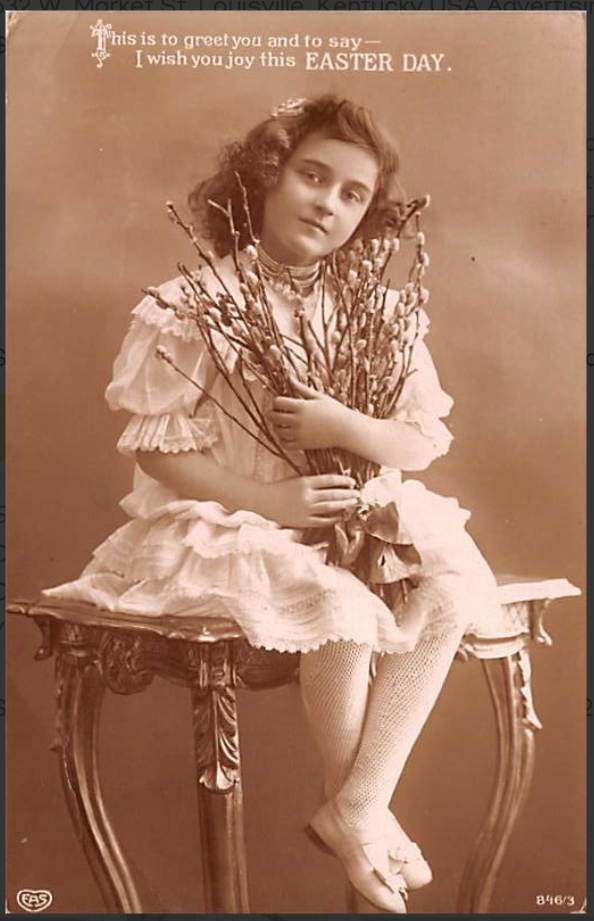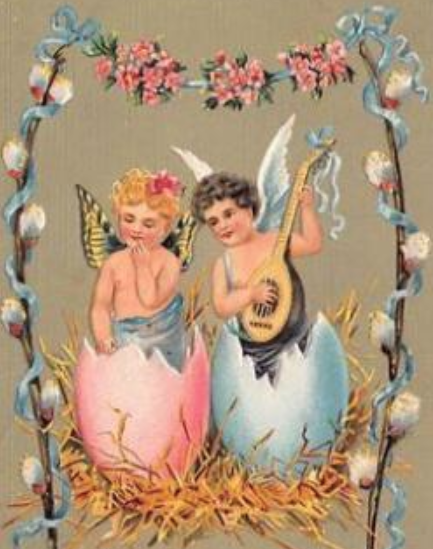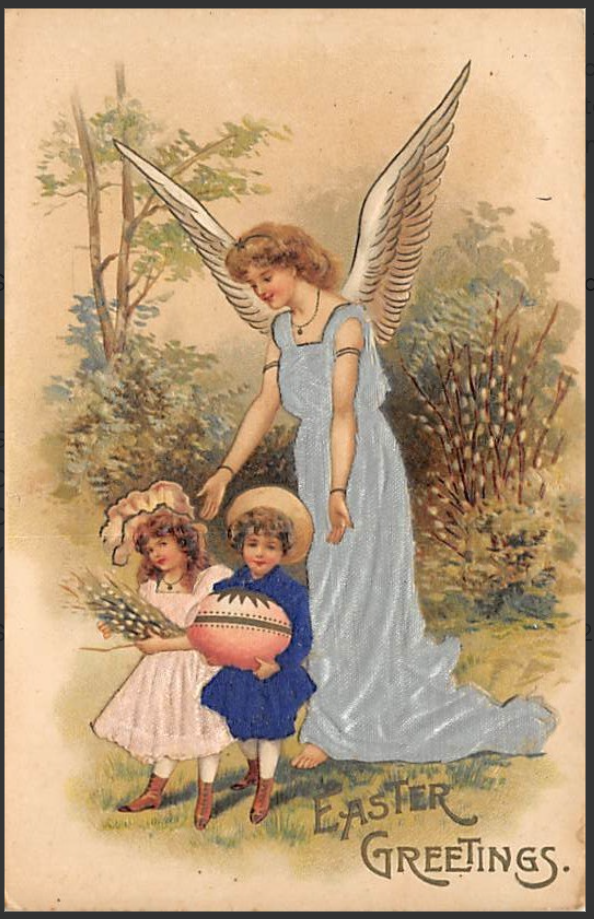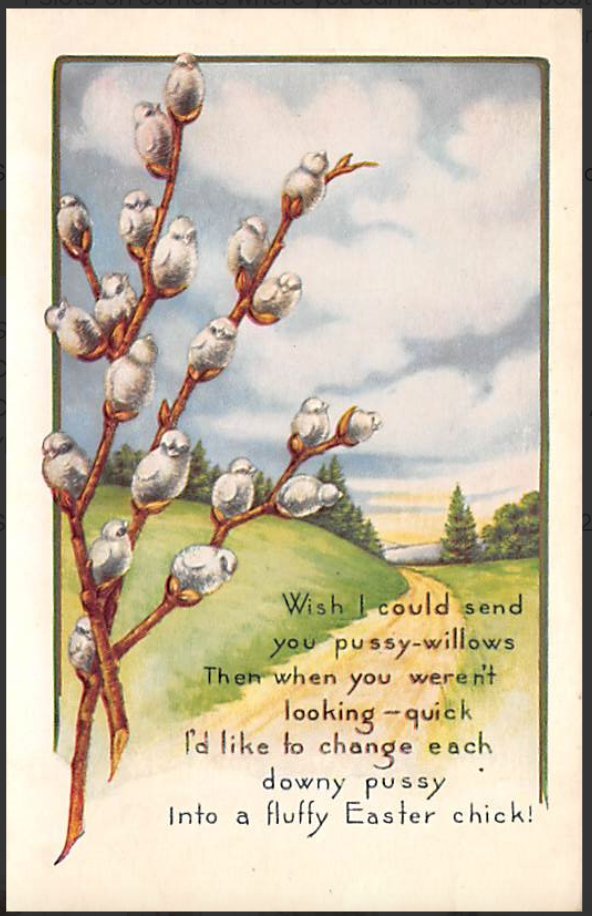
There is a lovely poem of how these pieces of silky fluff got their name. The Polish legend goes like this………….
A Polish legend tells the tale of tiny kittens, oh so frail.
Along the river’s edge they chased. With butterflies they played and raced.
They came too close to the river’s side and thus, fell in. Their mother cried.
What could she do but weep and moan? Her babies’ fate were yet unknown.
The willows, by the river, knew just what it was that they must do.
They swept their graceful branches down into the waters, all around.
To reach the kittens was their goal; a rescue mission, heart and soul.
The kittens grasped the branches tight. The willows saved them from their plight.
Each springtime since, the story goes, willow branches now wear clothes.
Tiny fur like buds are sprung where little kittens once had clung.
And that’s the legend, so they claim, how Pussy Willows got their name!
(Author Unknown)

Victorian Easter Cards 1900-1914

The Pussy Willow is neither fragrant nor showy, but if you look close you’ll see the silky shine of fur that is quite tempting to touch. One of the first blooms of late winter or early spring, it has great value to the insects and Hummingbirds who show themselves before the the rest of the summer activity begins. If you’d like more information about the importance of its roll the native Pussy Willow plays in our eco system, click on the link bellow. It’s packed full of great information.
https://extension.psu.edu/pussy-willow-a-valuable-native-plant
One of the most prominent Easter symbols for the people of Poland, the Pussy Willow represents the emergence of life from something which appears to be dry and lifeless, giving hope after a long period of dormancy. Christians used Palms as Jesus rode into Jerusalem, but on Palm Sunday you will also see Pussy Willow branches as a Polish tradition.
The Monday after Easter, there is a Polish-American celebration called Dyngus Day! Not unlike the Irish holiday of St Patrick’s Day, this is when the Pussy Willow is made busy marking the end of 40 days of Lent, a lead to excitement and joy for the coming of Easter.

What is Dyngus Day?
Pre-Christianity, the ancient spring rite of cleansing, purification, and fertility were carried out by switching and then sprinkling water over a person. Later years, farm boys in Poland would swat the girls they were interested in on the backs of their legs with Pussy Willow branches and squirt water over them, sometimes even drenching them. Getting the attention of the girl they hoped to court may have turned out more painful for the lucky lad than it was for the other. For Tuesday, the next day, was the day of reckoning when that young miss threw dishes and crockery back at him.
Pussy Willow was also used medicinally. It eased headaches, toothaches, and rheumatic diseases. There were many other uses over the years, but now we seem to just enjoy the calming affect they have when we look at or touch them.
The 2019 Gilmer County WV census shows a population of 100 people of Polish decent in residence. Though I’ve never known about Dyngus Day before my research on Pussy Willows I’d enjoy experiencing the celebration, as long as everyone knew I was already married and not eligible for an admirer trying to vie for my attention. I believe a bouquet of little fuzzy willows would be more to my liking than a switch.





The Gilmer County WV Historical Society would like to wish everyone a Happy Easter and fun Dyngus Day!
